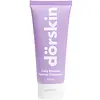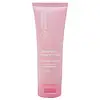What's inside
What's inside
 Key Ingredients
Key Ingredients

 Benefits
Benefits

 Concerns
Concerns

 Ingredients Side-by-side
Ingredients Side-by-side

Water
Skin ConditioningGlycerin
HumectantCocamide DEA
EmulsifyingCocamidopropyl Betaine
CleansingSodium Chloride
MaskingXanthan Gum
EmulsifyingPropylene Glycol
HumectantBenzoic Acid
MaskingCaprylyl Glycol
EmollientDisodium EDTA
Citric Acid
BufferingCentella Asiatica Extract
CleansingZinc PCA
HumectantGlycyrrhiza Glabra Root Extract
BleachingButylene Glycol
Humectant1,2-Hexanediol
Skin ConditioningCamellia Sinensis Leaf Extract
AntimicrobialPEG-40 Hydrogenated Castor Oil
EmulsifyingSalicylic Acid
MaskingGlycolic Acid
BufferingMilk Lipids
Skin ConditioningPentylene Glycol
Skin ConditioningPEG-60 Hydrogenated Castor Oil
EmulsifyingEthylhexylglycerin
Skin ConditioningCeramide NP
Skin ConditioningChlorhexidine Digluconate
AntimicrobialDisodium Phosphate
BufferingGlyceryl Caprylate
EmollientLactic Acid
BufferingPhytosphingosine
Skin ConditioningSodium Hyaluronate
HumectantLactobacillus/Pear Juice Ferment Filtrate
Skin ConditioningO-Cymen-5-Ol
AntimicrobialPotassium Sorbate
PreservativeSodium Benzoate
MaskingPhellodendron Amurense Bark Extract
Skin ConditioningBHT
AntioxidantSalix Alba Bark Extract
AstringentTocopheryl Acetate
AntioxidantRehmannia Chinensis Root Extract
Skin ConditioningMelia Azadirachta Leaf Extract
Skin ConditioningScutellaria Baicalensis Root Extract
AstringentHouttuynia Cordata Extract
Skin ConditioningGlycine Soja Seed Extract
Skin ConditioningHamamelis Virginiana Water
AstringentWater, Glycerin, Cocamide DEA, Cocamidopropyl Betaine, Sodium Chloride, Xanthan Gum, Propylene Glycol, Benzoic Acid, Caprylyl Glycol, Disodium EDTA, Citric Acid, Centella Asiatica Extract, Zinc PCA, Glycyrrhiza Glabra Root Extract, Butylene Glycol, 1,2-Hexanediol, Camellia Sinensis Leaf Extract, PEG-40 Hydrogenated Castor Oil, Salicylic Acid, Glycolic Acid, Milk Lipids, Pentylene Glycol, PEG-60 Hydrogenated Castor Oil, Ethylhexylglycerin, Ceramide NP, Chlorhexidine Digluconate, Disodium Phosphate, Glyceryl Caprylate, Lactic Acid, Phytosphingosine, Sodium Hyaluronate, Lactobacillus/Pear Juice Ferment Filtrate, O-Cymen-5-Ol, Potassium Sorbate, Sodium Benzoate, Phellodendron Amurense Bark Extract, BHT, Salix Alba Bark Extract, Tocopheryl Acetate, Rehmannia Chinensis Root Extract, Melia Azadirachta Leaf Extract, Scutellaria Baicalensis Root Extract, Houttuynia Cordata Extract, Glycine Soja Seed Extract, Hamamelis Virginiana Water
Water
Skin ConditioningGlycerin
HumectantCocamidopropyl Betaine
CleansingStearic Acid
CleansingPropylene Glycol
HumectantSodium Laureth Sulfate
CleansingLauric Acid
CleansingLauryl Betaine
CleansingMyristic Acid
CleansingPalmitic Acid
EmollientPotassium Hydroxide
BufferingNiacinamide
SmoothingGlycol Stearate
EmollientGlycyrrhiza Glabra Root Extract
BleachingCocamide DEA
EmulsifyingCentella Asiatica Leaf Extract
Skin ConditioningSalicylic Acid
MaskingEthylhexylglycerin
Skin ConditioningButylene Glycol
HumectantSodium Lauroyl Methylaminopropionate
CleansingAlcohol
AntimicrobialHydroxypropyl Methylcellulose
Emulsion StabilisingPhenoxyethanol
PreservativeParfum
MaskingDMDM Hydantoin
PreservativeDisodium EDTA
Triclosan
PreservativePotassium Sorbate
PreservativeSodium Benzoate
MaskingSodium Chloride
MaskingWater, Glycerin, Cocamidopropyl Betaine, Stearic Acid, Propylene Glycol, Sodium Laureth Sulfate, Lauric Acid, Lauryl Betaine, Myristic Acid, Palmitic Acid, Potassium Hydroxide, Niacinamide, Glycol Stearate, Glycyrrhiza Glabra Root Extract, Cocamide DEA, Centella Asiatica Leaf Extract, Salicylic Acid, Ethylhexylglycerin, Butylene Glycol, Sodium Lauroyl Methylaminopropionate, Alcohol, Hydroxypropyl Methylcellulose, Phenoxyethanol, Parfum, DMDM Hydantoin, Disodium EDTA, Triclosan, Potassium Sorbate, Sodium Benzoate, Sodium Chloride
 Reviews
Reviews

Ingredients Explained
These ingredients are found in both products.
Ingredients higher up in an ingredient list are typically present in a larger amount.
Butylene Glycol (or BG) is used within cosmetic products for a few different reasons:
Overall, Butylene Glycol is a safe and well-rounded ingredient that works well with other ingredients.
Though this ingredient works well with most skin types, some people with sensitive skin may experience a reaction such as allergic rashes, closed comedones, or itchiness.
Learn more about Butylene GlycolCocamide DEA is a coconut-derived cleansing agent that creates rich foam and helps to thicken the consistency of cleansing products.
This ingredient effectively removes dirt and oil while helping to stabilize formulations, making it a common addition to shampoos, body washes, and facial cleansers.
It has become less popular in recent formulations due to potential irritation in sensitive skin types and concerns about trace amounts of diethanolamine (DEA), which can potentially form nitrosamines.
While still considered safe at regulated concentrations, many manufacturers now opt for gentler alternatives like cocamidopropyl betaine or other surfactants that offer similar benefits with fewer potential drawbacks.
Learn more about Cocamide DEACocamidopropyl Betaine is a fatty acid created by mixing similar compounds in coconut oil and dimethylaminopropylamine, a compound with two amino groups.
This ingredient is a surfactant and cleanser. It helps gather the dirt, pollutants, and other impurities in your skin to be washed away. It also helps thicken a product and make the texture more creamy.
Being created from coconut oil means Cocamidopropyl Betaine is hydrating for the skin.
While Cocamidopropyl Betaine was believed to be an allergen, a study from 2012 disproved this. It found two compounds in unpure Cocamidopropyl Betaine to be the irritants: aminoamide and 3-dimethylaminopropylamine. High-grade and pure Cocamidopropyl Betaine did not induce allergic reactions during this study.
Learn more about Cocamidopropyl BetaineDisodium EDTA plays a role in making products more stable by aiding other preservatives.
It is a chelating agent, meaning it neutralizes metal ions that may be found in a product.
Disodium EDTA is a salt of edetic acid and is found to be safe in cosmetic ingredients.
Learn more about Disodium EDTAEthylhexylglycerin (we can't pronounce this either) is commonly used as a preservative and skin softener. It is derived from glyceryl.
You might see Ethylhexylglycerin often paired with other preservatives such as phenoxyethanol. Ethylhexylglycerin has been found to increase the effectiveness of these other preservatives.
Glycerin is already naturally found in your skin. It helps moisturize and protect your skin.
A study from 2016 found glycerin to be more effective as a humectant than AHAs and hyaluronic acid.
As a humectant, it helps the skin stay hydrated by pulling moisture to your skin. The low molecular weight of glycerin allows it to pull moisture into the deeper layers of your skin.
Hydrated skin improves your skin barrier; Your skin barrier helps protect against irritants and bacteria.
Glycerin has also been found to have antimicrobial and antiviral properties. Due to these properties, glycerin is often used in wound and burn treatments.
In cosmetics, glycerin is usually derived from plants such as soybean or palm. However, it can also be sourced from animals, such as tallow or animal fat.
This ingredient is organic, colorless, odorless, and non-toxic.
Glycerin is the name for this ingredient in American English. British English uses Glycerol/Glycerine.
Learn more about GlycerinGlycyrrhiza Glabra Root Extract is an extract of the roots of Licorice. It has been found to have several benefits such as skin hydrating, conditioning, and soothing.
One component, glabridin, has extra potent antioxidant and soothing properties. It has also been found to block pigmentation from UVB rays in guinea pigs.
Licorice Root also contains a flavonoid. Flavonoids are a natural substance from in plants. Flavonoids also have antioxidant properties.
Another component, glycyrrhizin, has been found to have anti-inflammatory and antimicrobial benefits. This may make licorice root extract effective at treating acne. However, more research is needed to support this.
Liquiritin is one of the flavone compounds found in licorice. It has been found to help lighten skin by preventing tyrosinase from reacting with tyrosine. When the two react, protein is converted to melanin. Melanin is the substance in your body that gives your features pigmentation.
Learn more about Glycyrrhiza Glabra Root ExtractPotassium Sorbate is a preservative used to prevent yeast and mold in products. It is commonly found in both cosmetic and food products.
This ingredient comes from potassium salt derived from sorbic acid. Sorbic acid is a natural antibiotic and effective against fungus.
Both potassium sorbate and sorbic acid can be found in baked goods, cheeses, dried meats, dried fruit, ice cream, pickles, wine, yogurt, and more.
You'll often find this ingredient used with other preservatives.
Learn more about Potassium SorbatePropylene Glycol is an odorless, colorless liquid. As a humectant, it helps skin retain moisture. It also aids in delivering active ingredients.
Another role of this ingredient is preventing a product from melting or freezing. Propylene glycol also adds antimicrobrial properties to a product, elongating product lifespan.
This ingredient is considered an organic alcohol and commonly added into both cosmetics and foods.
Those with sensitive skin or conditions may develop a rash when using this ingredient.
Learn more about Propylene GlycolSalicylic Acid (also known as beta hydroxy acid or BHA) is a well-known ingredient for treating skin that struggles with acne and clogged pores. It exfoliates both the skin's surface and deep within the pores to help clear out buildup, control oil, and reduce inflammation.
Unlike AHAs (alpha hydroxy acids), salicylic acid is oil-soluble. This allows it to penetrate into pores which makes it especially effective for treating blackheads and preventing future breakouts.
Salicylic acid is also known for its soothing properties. It has a similar structure to aspirin and can calm inflamed or irritated skin, making it a good option for acne-prone skin that is also sensitive.
Concentrations of 0.5-2% are recognized by the U.S. FDA as an over-the-counter topical acne product.
It can cause irritation and/or dryness if one's skin already has a compromised moisture barrier, so it's best to focus on repairing that before introducing this ingredient into your routine.
While salicylic acid does not increase sun sensitivity, it’s still important to wear sunscreen daily to protect your skin.
If you are looking for the ingredient called BHA or Butylated Hydroxyanisole, click here.
Learn more about Salicylic AcidSodium Benzoate is a preservative. It's used in both cosmetic and food products to inhibit the growth of mold and bacteria. It is typically produced synthetically.
Both the US FDA and EU Health Committee have approved the use of sodium benzoate. In the US, levels of 0.1% (of the total product) are allowed.
Sodium benzoate works as a preservative by inhibiting the growth of bacteria inside of cells. It prevents the cell from fermenting a type of sugar using an enzyme called phosphofructokinase.
It is the salt of benzoic acid. Foods containing sodium benzoate include soda, salad dressings, condiments, fruit juices, wines, and snack foods.
Studies for using ascorbic acid and sodium benzoate in cosmetics are lacking, especially in skincare routines with multiple steps.
We always recommend speaking with a professional, such as a dermatologist, if you have any concerns.
Learn more about Sodium BenzoateChances are, you eat sodium chloride every day. Sodium Chloride is also known as table salt.
This ingredient has many purposes in skincare: thickener, emulsifier, and exfoliator.
You'll most likely find this ingredient in cleansers where it is used to create a gel-like texture. As an emulsifier, it also prevents ingredients from separating.
There is much debate on whether this ingredient is comedogenic. The short answer - comedogenic ratings don't tell the whole story. Learn more about comegodenic ratings here.
The concensus about this ingredient causing acne seems to be divided. Research is needed to understand if this ingredient does cause acne.
Scrubs may use salt as the primary exfoliating ingredient.
Learn more about Sodium ChlorideWater. It's the most common cosmetic ingredient of all. You'll usually see it at the top of ingredient lists, meaning that it makes up the largest part of the product.
So why is it so popular? Water most often acts as a solvent - this means that it helps dissolve other ingredients into the formulation.
You'll also recognize water as that liquid we all need to stay alive. If you see this, drink a glass of water. Stay hydrated!
Learn more about Water